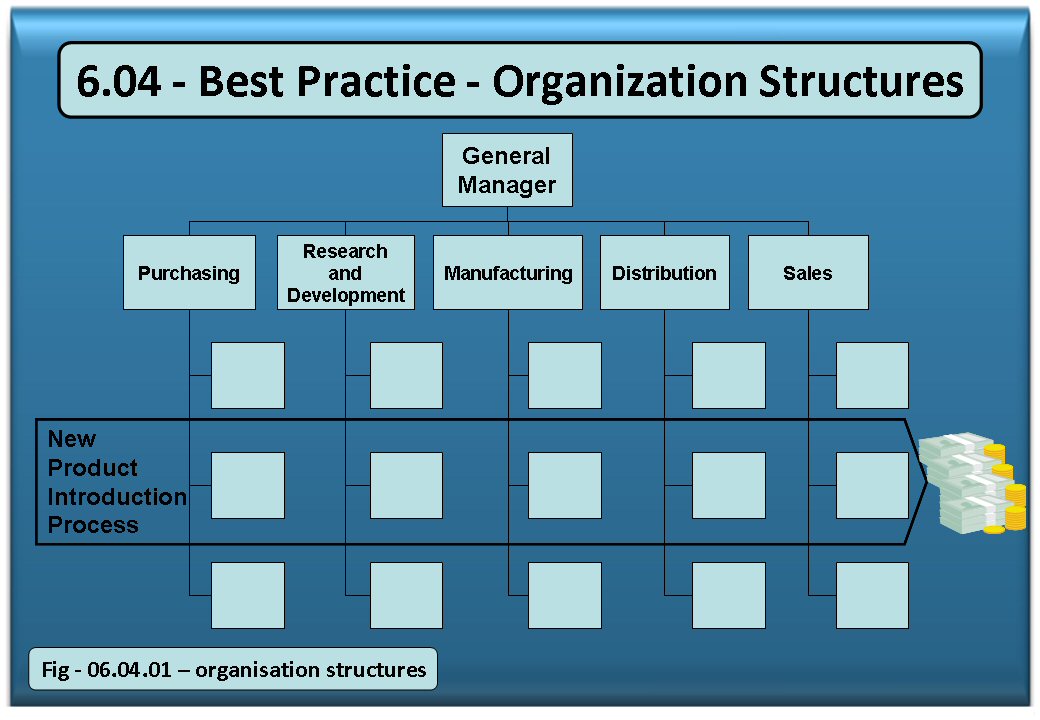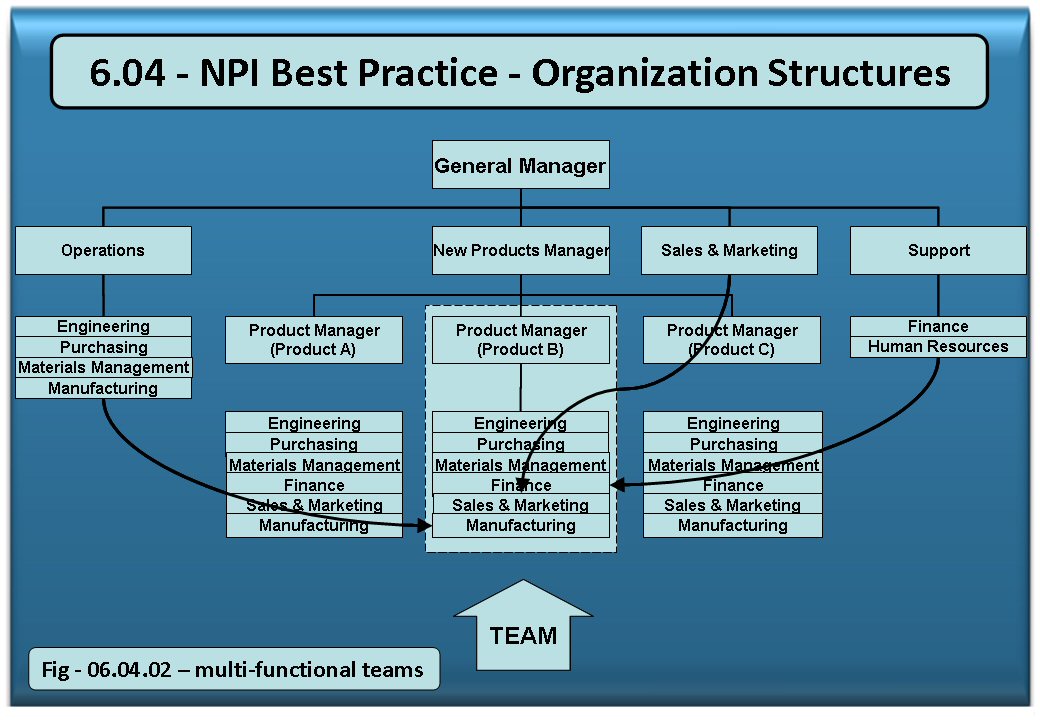6.04 - Best Practice – Organisational Structure
Unlocking the full potential of the organization to deliver new products
Organisations structures have traditionally been based on achieving technical excellence in functional disciplines. This inevitably results in a hierarchy. Business processes cross these organisational barriers. Functional organisational structures:-
- Increase time to market due to handovers from one function to the next
- Increase the number of engineering changes and rework loops consequently add to project costs and duration
- Create non-value-added activities
- Stop various groups of people talking – resulting in designers designing products that customers do not want and, sometimes, products that cannot be made.

Product focused multi-functional teams overcome some of these problems. Some simple principles should be followed:-
- Team membership should cover all relevant functional disciplines and include a variety of personalities
- Generalist skills are preferred to specialist skills – it reduces the number of people in the team.
- The complete team should be established as early as possible – it helps gain buy-in and allows people to have an impact on the project when the majority of decisions are set.
- Team building exercises may be useful at project start-up and at other stages.
- Co-location is the best way to achieve effective communications
- Membership should be full-time – if this cannot be achieved there should be core days when everyone on the team is working on the project.
- Teams should be given aggressive but achievable targets.
A typical Organisation that promotes multi-functional teams is shown below.

General Guidelines
- The teams may be either temporary and based on specific projects / products (strangers) or semi-permanent and based on a product group (repeaters)
- Runners would normally be undertaken in the appropriate function
- To improve communications between the product introduction and operating processes the Operations organisation should mirror the New Products Introduction (NPI) organisation structure.
- The heads of the functional disciplines should be responsible for the development of their respective disciplines (e. g. the Engineering Manager may be responsible for developing the engineering skills to support the future business needs and ensuring that engineering standards are maintained)
- The teams should be co-located and team members should physically leave their functional homes.
- To ensure continuity some team members should transfer to Operations and support the product they introduced
- Team members should be assured of their future after the project.
- Initially people do not like working in the teams - but after one or two projects they prefer team working to working under the functional constraints
- The person responsible for new products should report directly to the General Manager